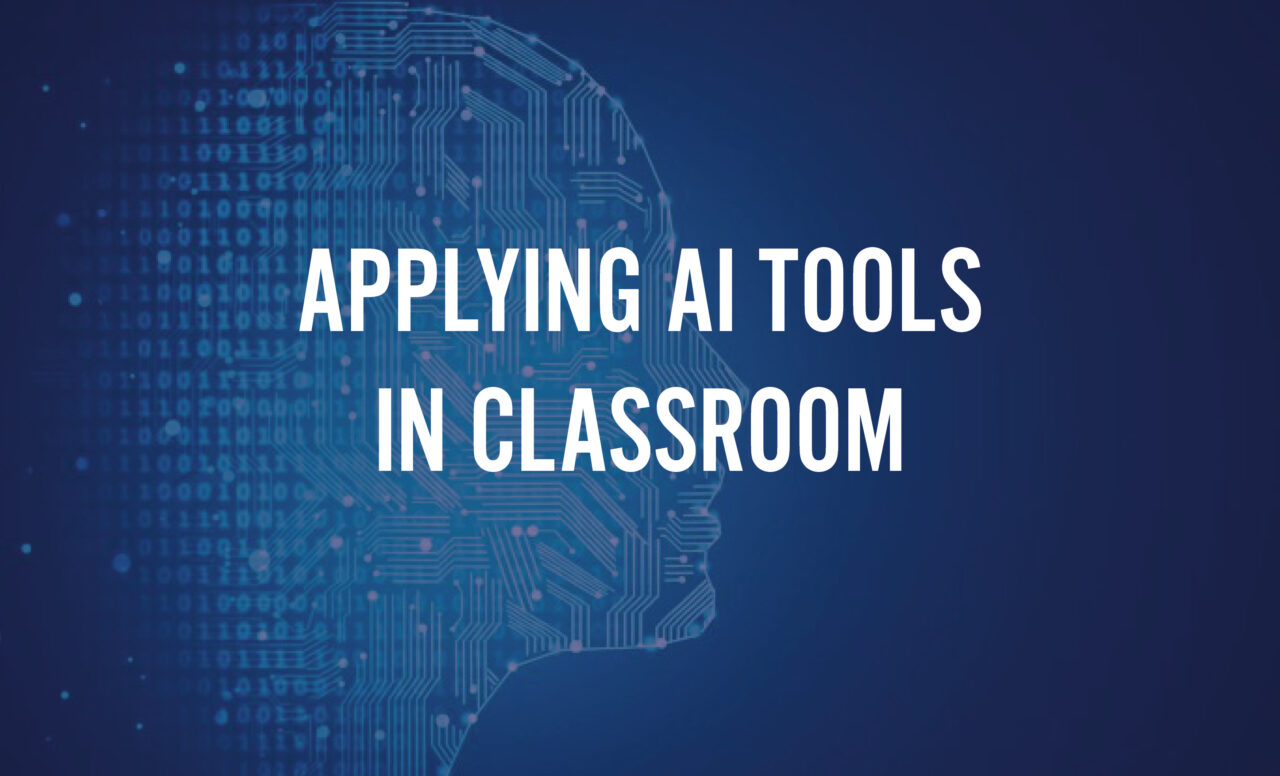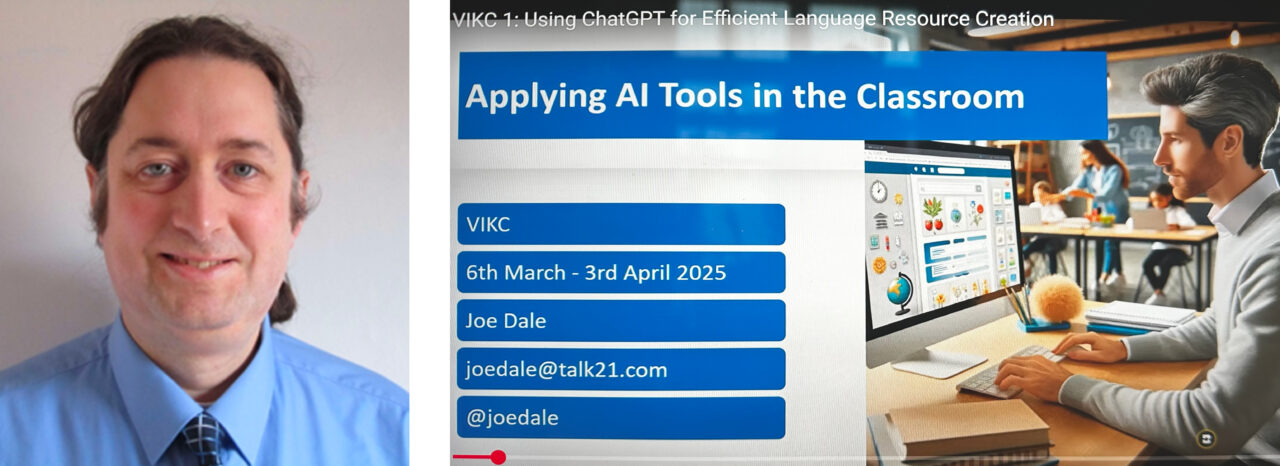ONLINE TRAINING PROGRAMME FOR TEACHERS “APPLYING AI TOOLS IN CLASSROOM”
25/05/2025

The State Language Centre, with partial funding from the British Council’s People2People initiative, successfully implemented an online professional development programme for educators titled “Applying AI Tools in Classroom” (March 3 – April 11, 2025, 40 academic hours). The program consisted of five online sessions and concluded with a best practice sharing Conference, “Learning by Doing with AI”. This is an accredited professional development programme for teachers, officially listed in the Non-formal Education Programmes Register (No 213005185, 2025-04-07)
A total of 53 teachers participated in the program, representing primary, lower secondary, upper secondary schools, gymnasiums, pre-gymnasiums, vocational institutions, and adult education centres. Notably, 30 participants work in schools serving national minorities or mixed-language communities, where instruction is delivered in Polish or Russian. Teachers from across Lithuania developed AI integration skills under the guidance of independent language consultant and UK-based expert Joe Dale. Dale collaborates with organizations such as Network for Languages, ALL, the British Council, BBC, Skype, Microsoft, and The Guardian. He is a frequent Conference speaker and recognized authority in language teaching and educational technology, having led training across Europe, the Americas, the Middle East, Far East, and Australasia. He was a member of the Ministerial Steering Group on languages for the UK coalition government and advised on the Linguanet Worldwide project for The Language Company.
Throughout the training, participants explored innovative applications of artificial intelligence tools in education. They were introduced to AI-powered tools for enhancing language and subject teaching. Activities included sentence building with emojis to support vocabulary development, and the use of Immersive Reader and TurboScribe for text-to-speech and multimedia transcription tasks. Teachers also learned to use Brisk Teaching to create listening comprehension tasks from YouTube video transcripts, and Padlet for Speaking, enabling students to record and submit spoken responses. Additional tools presented included Padlet’s “Talk for Me” feature for interactive listening tasks, as well as Mizou, Diffit, Google My Maps, and ChatGPT, used to support cultural and geographical learning.
Participants practiced using these tools by completing hands-on tasks via the Padlet platform—creating, sharing, and reflecting on AI-enhanced teaching materials throughout the programme. They gained practical experience designing activities targeting all four language skills: listening, speaking, reading, and writing. Beyond the live sessions, teachers engaged in 12 hours of independent work, presenting their created tasks and reflections through Padlet.
Most teachers reported that AI tools help manage lessons more effectively, plan and organize tasks, assess student achievement, provide targeted feedback, and enhance communication with parents. They also contribute to improved students` outcomes. Through collaborative, hands-on learning and exposure to various AI tools, teachers grew more confident and open to using technology in their educational practice.
The program culminated in a final best practice Conference “Learning by Doing with AI”, which drew 186 educators from kindergartens, primary, lower and upper secondary schools, gymnasiums, pre-gymnasiums, universities, colleges, vocational schools, and adult learning centres. Participants of the training shared their classroom experiences using AI tools.
One participant highlighted that “AI tools can be incredibly helpful for students. They allow us to tailor tasks to each student’s level—some need more support, others more challenges. AI can quickly provide answers, explanations, and even help grasp complex topics. It also motivates students to be more engaged, independent, and curious.”
This insight shows that teachers are starting to view AI not just as a technical hurdle, but as a valuable ally in the learning process.
A particularly inspiring story was shared by teacher Ieva during the final Conference. She told how confused she was after the first day of training and nearly gave up. However, choosing to persevere, she gradually built confidence and eventually delivered her own presentation at the Conference, reflecting on her personal growth. Ieva described her journey as starting with an “empty backpack,” facing “towering mountains ahead.” “I’m not saying I’ll climb them all,” she said, “but I’m already on my way.” She closed with a powerful message: “If you want something you’ve never had before, you must dare to do something you’ve never done before.”
Ieva’s story reflects the transformation many teachers experienced—shifting from fear and doubt to confidence, motivation, and a desire to innovate in their teaching practice.
We invite you to explore and gain inspiration from the participants’ reflections:
HOW I LEARNED TO EMBRACE AI:
Session 1 – ChatGPT for Resource Creation
Session 2 – Listening with AI Tools
Session 3 – Speaking with AI Tools
Session 4 – Reading with AI Tools
Session 5 – Writing with AI Tools
RECORDINGS OF ONLINE SESSIONS:
1. https://youtu.be/NQYoZmgjWtE
2. https://youtu.be/-RpR9jKdfEg
3. https://youtu.be/Pt_4KGl66RU
4. https://youtu.be/gwJBv82i6sw
5. https://youtu.be/EbnO1TPioeo
FINAL CONFERENCE:
At the end of the training, participants received video recordings of all sessions and the final Conference, as well as professional development certificates. These programs offer significant support to teachers—empowering them with practical skills and the mindset needed to effectively integrate AI tools in the classroom, making lessons more engaging, motivating, and creativity-driven.
